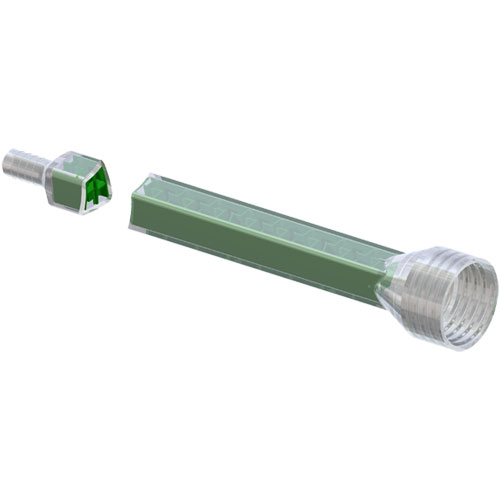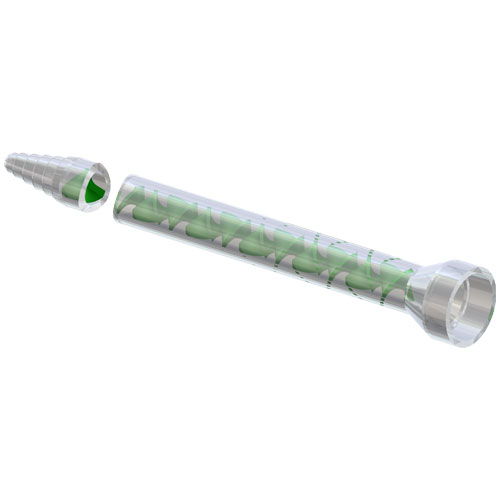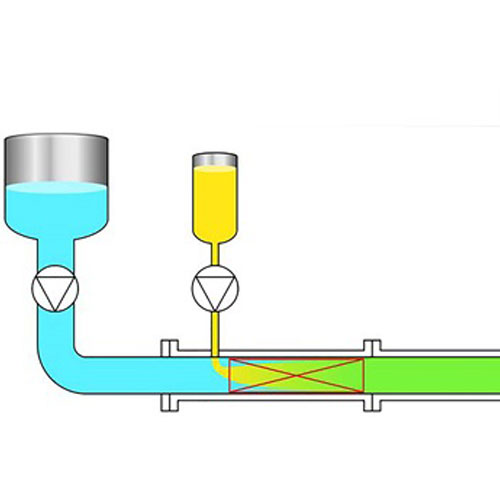Static Mixtures
What is static mixing?Static mixers are tubular internals that produce desired mixing and dispersion effects as the fluid flows around motionless mixer parts. The fluid flow is provided by pumping.
With our static mixers you can produce small volumes with an excellent mixing reliability. They can be easily installed, cleaned and maintained.
Make use of leading and pace-making technology with the most energy efficient mixer designs for key markets. Benefit from our long-lasting experience and broad application know-how.
In general, applications using a static mixer can be divided into two categories - for use with a cartridge and a hand-held dispenser, or for use with Meter Mix and Dispense [MMD] equipment.
Flow rate is a key factor to consider when choosing between hand-held cartridge and MMD systems. In any 2-component adhesive operation, the components are kept separate in a pre-proportioned, molded plastic cartridge or in machined steel cylinders before they are introduced into a static mixer. The user must calculate the amount of pressure necessary to keep the two liquids flowing at the appropriate rate for a specific application.
For example, with high viscosity components, it may require a significant force to move the liquids at a proper flow rate. Understanding the maximum flow rate that a hand-held cartridge system can generate provides a data point for making a cartridge vs. MMD equipment decision.
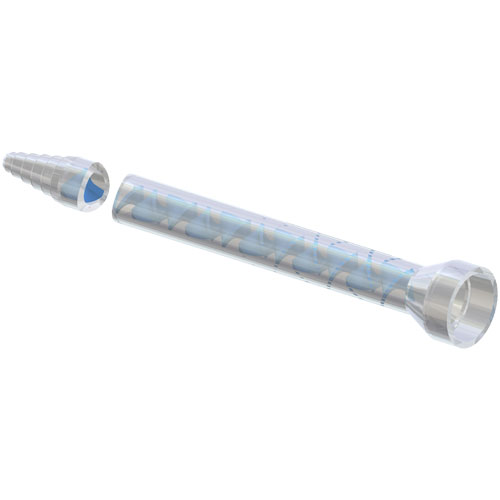
MMD systems are automated and can dispense higher volumes of liquid than is possible with hand-held cartridge systems. Volume is one of the widely used reasons for switching to an MMD solution, although volume alone is not a deciding factor. In many instances, the use of MMD systems is an upgrade from hand-held cartridge systems, particularly when time-controlled adhesive shots are needed. This is frequently the case with assembly line and robotic applications, which often are handled with MMD systems.
Airplane manufacturers, in contrast, use hand-held cartridge systems because the bonding operations are spread out over large factory areas. Also, inside the airplane being fabricated a worker must work in an extended area that has many tight locations. Plant maintenance operations are likely to use hand-held systems for similar reasons.
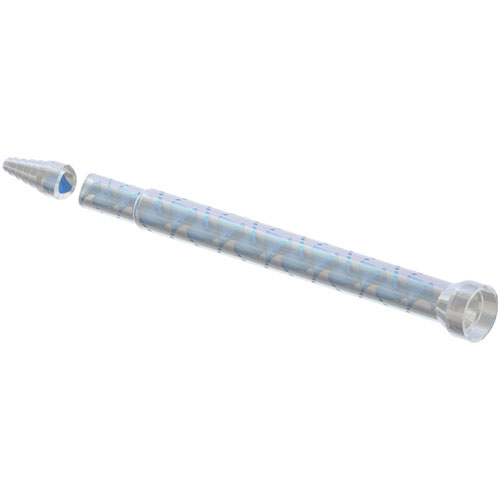
Complex manufacturing or maintenance operations often use many different adhesives in a wide range of applications. Changing adhesives with MMD systems is generally laborious, whereas many operators feel that changing adhesives in a hand-held system is no more difficult than changing a cassette in a VCR. Simplicity of use is a reason that hand-held systems are chosen in many industrial settings. Even in a less complex operation, such as repairing cracks around swimming pools, an end user will find a hand-held cartridge system beneficial because of the size and unique qualities of each area needing repair.
MMD systems are primarily used inside buildings and plants; hand-held systems are used both inside and outside.
Hand-held cartridge systems are manufactured in a limited number of volumetric ratio systems - 1:1, 3:2, 2:1, 4:1, and 10:1 - whereas MMD systems are always customized, which yields a nearly unlimited set of volumetric ratios. Many ratios, if not most, outside of structural applications, are not compatible with the discrete ratios offered in cartridge systems. A ratio such as 100:36 or 100:28 requires the use of MMD equipment.
Each specific application frequently represents a simple decision for adhesive manufacturers and end users because flow rate, volume, production and related requirements often dictate a straightforward choice between hand-held cartridge and MMD systems. Nonetheless, a handheld cartridge system is often an excellent choice to simulate an adhesive application before moving to the more expensive MMD solution. An adhesive manufacturer or end user can experiment with hand-held cartridge systems to test variables that affect static mixer performance for specific applications, such as temperature, humidity, length or diameter of the mixer, and curing time and work life of the adhesives.
